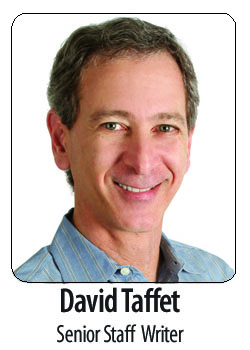
Arlington Hall (David Taffet/Dallas Voice)
 Turtle Creek Park and Stanley Marcus Park are two new names that have been proposed for Oak Lawn Park. Both have bad connotations in the LGBT community and over the weekend, a protest began on Facebook to stop the homophobic name change.
Turtle Creek Park and Stanley Marcus Park are two new names that have been proposed for Oak Lawn Park. Both have bad connotations in the LGBT community and over the weekend, a protest began on Facebook to stop the homophobic name change.
Oak Lawn Park was the original name of Robert E. Lee Park and the park temporarily took the original name again when the statue of the Civil War general that was placed in 1936 was removed in 2017.
In the late 1960s, the gay community began moving into rundown Oak Lawn and redoing properties. By the early 1980s, all of the formerly dilapidated storefronts on Cedar Springs Road were renovated and the strip became a destination.
By the 1990s, developers began building and by the 2010s, the area was almost unrecognizable — except for one thing — Oak Lawn was still the center of the LGBT community despite the developers.
On the city plat, Oak Lawn extends approximately from Central Expressway to Inwood Road and from the Highland Park border and Fitzhugh Avenue to Harry Hines. However, that’s not the way developers see it.
In order to market properties to bring people back to the center of the city, the area from the Katy Trail to Central Expressway from downtown to Fitzhugh Avenue became “Uptown” obliterating the State Thomas neighborhood and turning its back on Oak Lawn.
When Parkland Hospital moved across the street and into Oak Lawn and as cheaply built and poorly maintained properties sprang up along Maple Avenue, that area was stripped from Oak Lawn, becoming “the Medical District.” No need to tell the medical students who have flocked to the area to attend UT Southwestern they’d be living in Homo Heights. They’d reside in the posh Medical District.
But what’s wrong with Turtle Creek Park? And you can’t turn around in Neiman Marcus without bumping into a gay store clerk at any Neiman Marcus anywhere.
Turtle Creek runs through the heart of Oak Lawn and Turtle Creek Boulevard is the crown jewel of Oak Lawn. When Harvey Milk lived in Dallas before moving to San Francisco, he lived in an apartment complex that’s long gone on Turtle Creek Boulevard.
Although lots of LGBT people live in those Turtle Creek high rises, and one property in particular with lots of LGBT residents hosts lots of LGBT community events, it’s the residents doing the hosting while the developers try to distance themselves from the rest of the Oak Lawn community.
Changing the name from Oak Lawn Park to Turtle Creek Park emphasizes the idea that the LGBT community is not welcome in the park and the park is not part of Oak Lawn.
But what about Stanley Marcus?
Sure Neimans has lots of gay employees now. We’re glad they woke up and realized some of us sell women’s clothing and cosmetics and furs and other luxury items better than anyone else.
But that’s not the history of Neimans.
When Jack Evans — better known as the first half of Jack and George — first moved to Dallas, he got a job at Neiman Marcus downtown. Could Jack sell? Jack and George were the pioneer gay power duo who began selling property in Oak Lawn in the 1960s.
But when Herbert Marcus saw Jack on the sales floor, he was just a little too flamboyant for Neiman Marcus and fired him on the spot. Stanley Marcus wasn’t responsible for the policy change. While it’s perfectly appropriate to honor the memory of Marcus elsewhere in the city, the company’s history of homophobia says that if there’s one place in Dallas where that memorial should be, Oak Lawn isn’t it.
So here’s a radical idea. When the property now named Oak Lawn Park was donated to the city in 1903 soon after Oak Lawn was annexed, it was named Oak Lawn Park. Once the racist statue that was placed by the Dallas Southern Memorial Association, a branch of the Ku Klux Klan at the time, was removed, the original name was restored.
Although the “Lee Park Conservancy” that maintains the park renamed itself the Turtle Creek Conservancy, the park they conserve is Oak Lawn Park. Although they raise funds to maintain the park, they also receive tax dollars and services from Dallas Park and Recreation. They don’t own the park. We do.
Let’s maintain the name we — the people who live, work and play in Oak Lawn — prefer.
— David Taffet













Wonderfully well said!
Thank you for this! So much history there!!! As a native Dallasite, I honestly have never given the name of the park much thought, but I’m also a white southerner, so I’ve got that “priviledge” on my side. It seems to me that “Oak Lawn Park” makes the most sense. IMHO